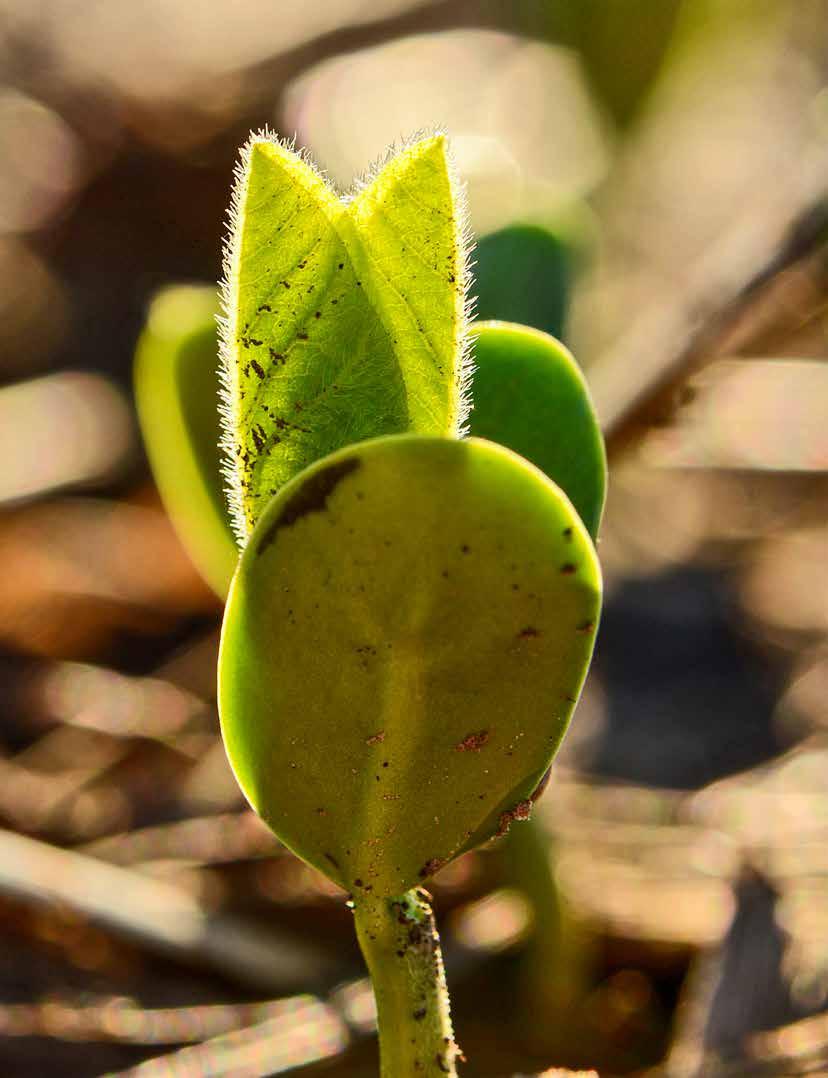
p.16-17
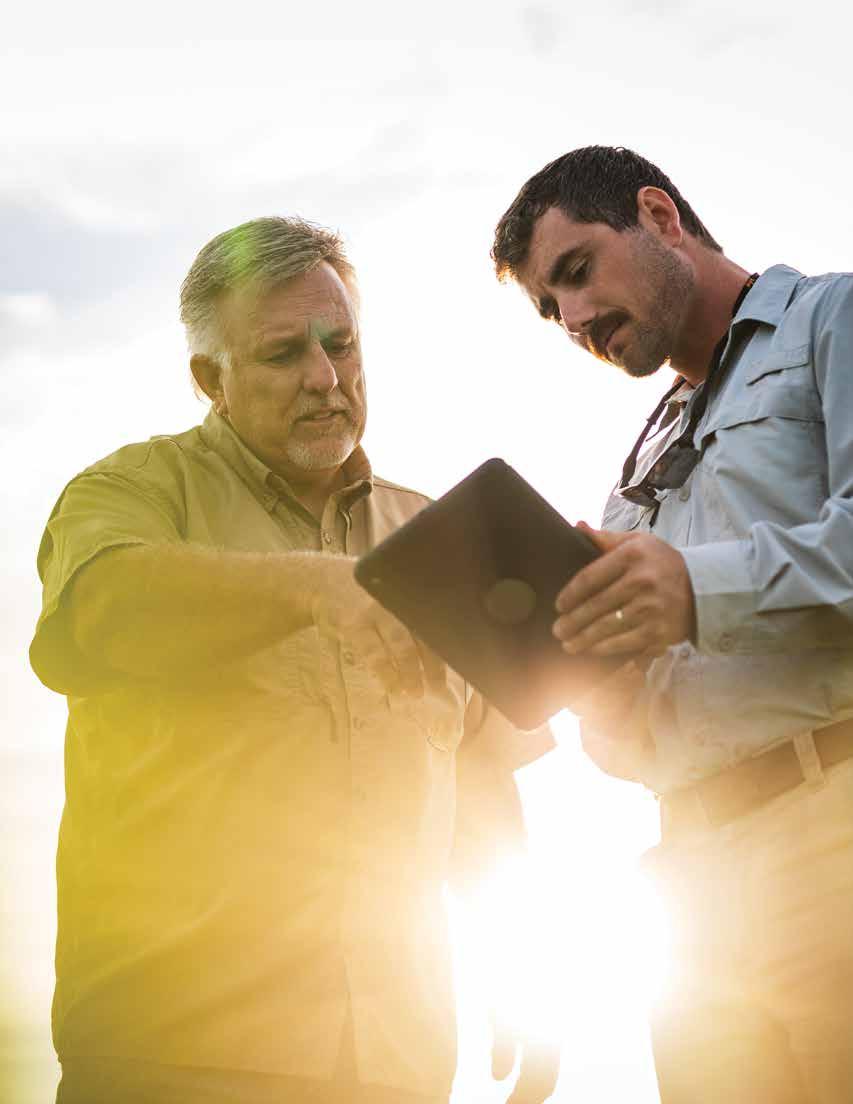


p.16-17

From researching new uses for soybeans to identifying new markets for U.S. soy, the soy checkoff is working behind the scenes to create new opportunities and increase profits for soybean farmers. We’re looking inside the bean, beyond the bushel and around the world to keep preference for U.S. soy strong. And it’s helping make a valuable impact for soybean farmers like you.
See more ways the soy checkoff is maximizing profit opportunities for soybean farmers at unitedsoybean.org
Last year, U.S. soybean farmers grew nearly onethird of the soybeans in the global market. To ensure U.S. Soy retains access to a quickly changing, consumer-driven market, the Ohio Soybean Council joined soybean checkoffs from the states of Indiana, Illinois, Iowa and Missouri to conduct the Future State of Soy research that identified the most impactful trends for soy in the coming years. See what trends emerged from this research and how your checkoff is already investing in projects that align with these trends on pages 16-27.




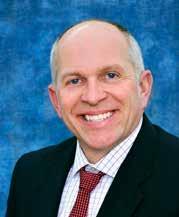
Patrick Knouff
Ohio Soybean Association President Shelby County soybean farmer
Let me begin this letter by asking you to send your thoughts and prayers to those in Ukraine. While the war impacts people around the world, Ukrainian citizens endure the brunt of it all. I applaud the resilience of Ukrainian citizens and farmers, many of whom were able to get their crop in the ground this spring.
Farmers in the United States are in the middle of the 2022 planting season. While you are in the fields this spring, the Ohio Soybean Association will be in the Statehouse and D.C. advocating for Ohio farmers. This year has already brought several legislative wins for OSA, including the passage of House Bill 95 (Ag-LINK) and House Bill 440 (Young and Beginning Farmers Tax Credit Bill).
Another win for OSA and Ohio farmers includes the lifted restrictions on Enlist One and Enlist Duo. In early January, the Environmental Protection Agency (EPA) prohibited the use of these products in more than 200 counties, causing confusion for many growers who had not been warned about the decision. Thanks to our organization’s membership and leadership efforts, the restrictions for both products were lifted in late March. OSA, along with other state organizations, sent a letter to the EPA that called on the agency to remove county-level Endangered Species Act (ESA) use prohibitions on the Enlist registrations for 2022. The letter also called on EPA to lift prohibitions in counties where endangered species thought to be present under the registration are confirmed not present. Additionally, OSA asked members to encourage their representatives to sign on to a similar letter to the EPA from Congress. This goes to show how powerful your voice is, and we urge you to continue using it. We thank you for your efforts every day!
In other news, the Ohio Soybean Council (OSC) invested in a project with four other state soybean checkoffs to see what the soybean industry will look like in 2040. With the help of Aimpoint Research, a global strategic intelligence firm specializing in agri-food, five trends were cited as major contributors to how soy will be used in the future. You can read more about the “Future State of Soy” and the checkoff’s investment in these identified trends starting on page 16. One thing is certain: our industry is rapidly changing and organizations like ours are primed to help farmers navigate these new trends.
Have a safe and successful planting season! If you are interested in receiving the latest OSA advocacy news and more, sign up for one of our membership options! Visit SoyOhio.org/membership
President
Patrick Knouff, Shelby County
Vice President
Rusty Goebel, Williams County
Treasurer
Jerry Bambauer, Auglaize County
Secretary
Trish Cunningham, Union County
Chairman
Ryan Rhoades, Marion County
Trustees
David Clark, Warren County
Justin Esselburn, Holmes County
Austin Heil, Hardin County
Caitlyn Heimerl, Industry Affiliate Ex-Officio
Jeff Magyar, Ashtabula County
Jeff McKanna, Hancock County
Bennett Musselman, Pickaway County
Derek Reusser, Holmes County
Andy Stickel, Wood County
Bob Suver, Clark County
Kerrick Wilson, Preble County
American Soybean Association
Board Representatives
Jerry Bambauer
Scott Metzger
Ryan Rhoades
Staff Credits
Kirk Merritt - Publisher
Julia Brown - Editor
Madi Layman - Staff Writer
Brent Warren - Art Director
Barry Falkner - Photo Quality/Proofer
Ohio Soybean news is published six times a year by the Ohio Soybean Association, 918 Proprietors Rd., Suite A, Worthington, OH 43085. Phone: 614-476-3100. For address corrections contact Ohio Soybean News at 918 Proprietors Rd., Suite A, Worthington, OH 43085.
Web address: www.soyohio.org E-mail: cdeboard@soyohio.org
Comments and statewide news articles should be sent to the above address. Advertising space reservation must be made by the first of the month preceding publication. In consideration of the acceptance of advertisement, the agency and the advertiser must, in respect of the contents of the advertisement, indemnify and save the publisher harmless against any expense arising from claims or actions against the publisher because of the publication of the content of the advertisement.
For Advertising Sales Contact:
Matt Herman - (612) 812-5833
matt.herman@dtn.com
Patrick Knouff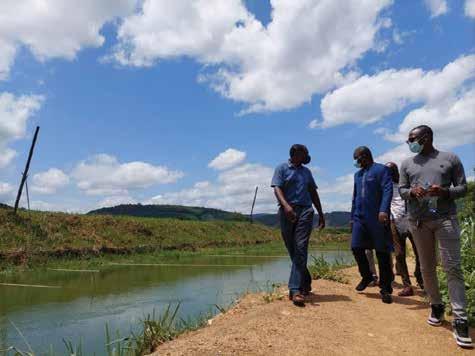
ASA/WISHH is helping explore opportunities for soy-based feeds to grow aquaculture in 8 sub-Saharan African countries, including Ghana, Nigeria, Senegal, Togo, Burkina Faso, Uganda, Kenya, Tanzania

The Farm Bill is a piece of legislation that impacts every American — from keeping the food supply secure, providing assistance for those who need it and helping conserve the environment. But what is the Farm Bill and how did it become so impactful? The Farm Bill is an omnibus law that governs federal agricultural and food programs. Titles in the Farm Bill cover commodity revenue supports, agricultural conservation, trade and foreign food assistance, farm credit, research, rural development, forestry, bioenergy, horticulture and domestic nutrition assistance. The bill is renewed every five years and gives policy makers the opportunity to regularly review agricultural policy issues.
The Farm Bill is made up of twelve titles, but the Nutrition, Crop Insurance, Farm Commodity Support, and Conservation titles account for 99 percent of the anticipated mandatory Farm Bill spending. The Nutrition title has the largest spending of all the titles, with nearly 80 percent of its budget going toward the Supplemental Nutrition Assistance Program (SNAP).
The first Farm Bill was developed as part of President Franklin Roosevelt’s New Deal. After World War I ended, crop prices dropped, and many farmers struggled financially through the 1920s and into the Great Depression. The first Farm Bill passed in 1933 as a program to raise agricultural prices by paying farmers to limit production. By 1938, Congress made the program permanent with a renewal every five years.
There have been several key moments throughout the history
Projected outlays under the 2018 Farm Act, 2019-2023
of the Farm Bill. The first was the inclusion of the food stamp program in the 1970s. In 1964, the Food Stamp Act became law, which codified and expanded the food stamp program. The Farm Bill was initially created to be used for farm aid programs, but in 1977 the Food and Agricultural Act was the first to include the entire food stamp program with the Farm Bill. Since then, food stamps and farm aid have been discussed together.
In 1996, Congress voted to gradually eliminate farm subsidies. However, in 1997 crop prices fell. The next year Congress voted to bring back agricultural subsidies. This time the government offered direct payments to farmers based on how much land they had, instead of paying them not to grow.
Over the 89 years since the first Farm Bill, the bills have grown in
outlays = $428 billion
complexity and budget, becoming more complicated and politically sensitive. Next year, Congress will consider the 19th Farm Bill to date. Even though we are less than a year away from 2023, there are still many unknowns. What do current events mean for the upcoming Farm Bill and its budget? How will this year’s midterm election impact who controls one or both chambers of Congress and therefore the makeup of the agricultural committees? Will past ad hoc spending be included? Will the soybean reference price and base acres be updated? Lastly, what will benefit Ohio soybean farmers the most? Stay tuned.
To support the Ohio Soybean Association’s efforts, become a member at SoyOhio.org/Membership. u









































Revytek® fungicide delivers uncompromised performance. So your crops get reliable, season-long protection.




 Wesley Miller - Dale, IN
Wesley Miller - Dale, IN
Acting as the membership and policy voice for Ohio soybean farmers, the Ohio Soybean Association (OSA) decided to create a scholarship program to support students interested in advocating for the future of soybeans. OSA’s inaugural $1,000 scholarship was awarded to Lauren Mellott of Butler, Ohio, for the 2022–2023 academic year.
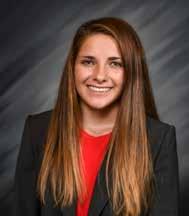
education. In addition to being a Student and Young Adult member of OSA, Lauren is an active member of the Agricultural Education Society and Saddle and Sirloin clubs at Ohio State. She keeps busy by serving as a peer mentor for the College of Food, Agricultural and Environmental Sciences and completing industry internships during her summers.
for the soybean industry,” said Jennifer Wilson-Oechsle, Van Wert County soybean farmer and OSA scholarship committee member. “Lauren is an excellent choice for this scholarship because of her genuine interest in the soybean industry and desire to educate the next generation.”
Lauren is a sophomore at The Ohio State University studying agriscience
“We found that supporting students like Lauren will create a greater future
To qualify for OSA’s scholarship, applicants must be immediate family (child or grandchild) of a current OSA member OR a Student and Young Adult member of OSA (SYA membership is free). To qualify for the scholarship, applicants must be enrolled as a full-time student at a college, university or technical school. Applications for the 2023–2024 scholarship will open in October 2022. u
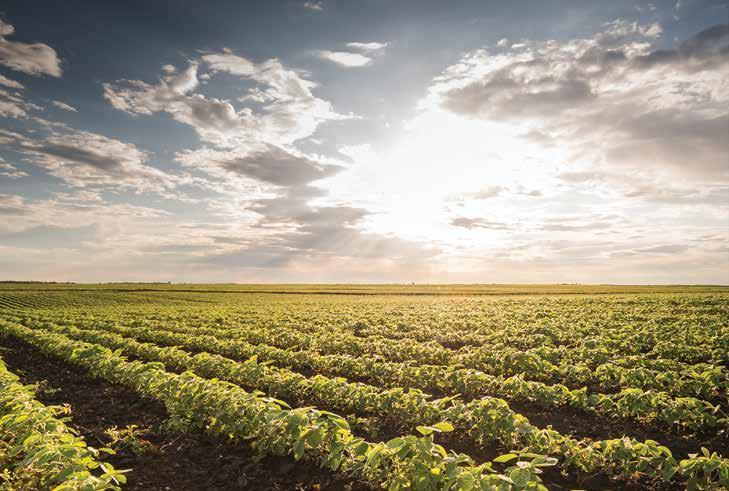
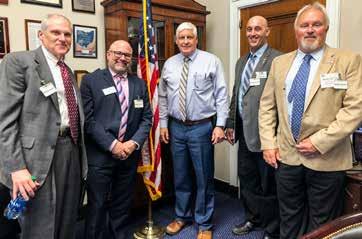
In March, Ohio Soybean Association (OSA) board members returned to Washington, D.C., to advocate for issues crucial to the soybean industry. OSA board members who traveled to D.C. included Scott Metzger of Pickaway County, Chairman Ryan Rhoades of Marion County, and Vice President Rusty Goebel of Williams County, as well as OSA staff members Kirk Merritt and Emilie Regula Hancock.
OSA advocated for the following:
Farm Economy: Support Farmer Tools
Supply Chain: Support sufficient, affordable input supplies and steady workforce to enhance food security
Biotech & Crop Protection: Support science and risk-based regulation and continued access to farm production tools
Conservation & Sustainability: Support Growing Climate Solutions Act passage and help protect against harmful WOTUS changes
Goebel shared his concerns regarding additionality in carbon programs, saying that farmers should be able to receive recognition for the sustainable practices they have been using for decades. “I believe we need all the support from the Congress and the House to keep us doing a lot of the things farmers have been
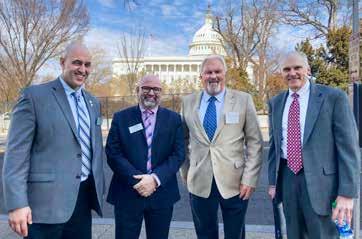
doing for the last 20 years. When talking about carbon credits and helping companies get to net zero, I believe farmers have been doing a good job at doing that and we don’t want to have to start from scratch,” Goebel said. “We would like to have support so it is feasible for us to keep doing that and help our bottom line.”
Tax: Continue to protect against harmful farm tax changes
2023 Farm Bill: Consider American Soybean Association (ASA) a resource as reauthorization nears
Markets: Keep Markets Viable & Increase Demand for Soybeans at Home and Abroad
Trade: Encourage filling of agfocused positions at United States Trade Representative (USTR) and USDA to promote markets for U.S. Soy worldwide and engage on current challenges
Biofuels: Support extension of the biodiesel tax credit, which expires in December 2022; support soy as a feedstock for sustainable aviation fuel; support EPA RFS rulemaking that increases biofuel blending volume.
“We talked about biofuels at our nation’s capital. We talked about having an extension on biofuels until 2025 and how important that is for soybean farmers and our viability in the future,” Rhoades
Left: OSA board members and staff sat down with Representative Bob Gibbs to discuss legislative priorities and how they will impact Ohio soybean farmers.
Right: Ryan Rhoades, Scott Metzger, Rusty Goebel, Kirk Merritt
said. “If the current House Bill 3472 passes it will do just that. We are getting the ball rolling on soybean viability in the future.”
Aquaculture: Co-sponsor the Advancing the Quality and Understanding of American Aquaculture (AQUAA) Act to increase U.S. aquaculture production
Movement: Improve Transportation & Infrastructure Channels
Water Resources Development Act: Support continued investment into inland waterways
Infrastructure Bill Implementation: Support implementation of ASA priorities in the Infrastructure Investment and Jobs Act
Metzger, Rhoades and Goebel spoke with various representatives and their staff including Congressman Troy Balderson, Representative Warren Davidson, Representative Bob Gibbs and Representative Bob Latta. u
Eight Ohio soybean farmers participated in the Delegate Session at the 2022 Commodity Classic in New Orleans.
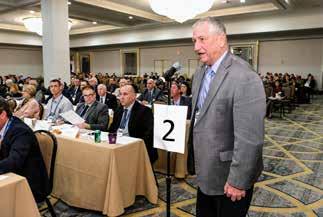
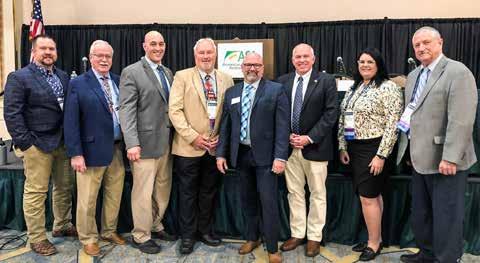
Jerry Bambauer, Ohio Soybean Association treasurer and Auglaize County soybean farmer, addressed soybean farmers from across the U.S. about ideas and topics that impact their resolutions at the American Soybean Association Delegate Session.
Commodity Classic concluded on Saturday, March 12, with members of the American Soybean Association (ASA) approving the organization’s annual policy resolutions. This process is critical, as it updates and builds on existing resolutions and helps lead the organization in addressing current and emerging priorities for the U.S. soy industry.
“It’s always good to get to talk with fellow soybean farmers,” said Scott Metzger, ASA executive committee member and Ohio soybean farmer. “By collaborating with growers from across the U.S., ASA approved resolutions for 2022 that will ensure a successful future for the soybean industry.”
The resolutions approved for this year highlighted soy policies including supply chain, crop protection and a strong safety net for the 2023 Farm Bill. Among the approvals are resolutions supporting:
An improved Title I farm safety net in the next farm bill and continued
support for crop insurance
Sufficient in person staffing at USDA county offices
Policies that ease supply chain delays and obstructions
The use of sound science, grower engagement, and flexibility on pesticide Endangered Species Act mitigations
Biofuels enhancement programs in the 2023 Farm Bill
Increased USDA investment in soybean research proportionate to soybean’s farmgate receipts
Engagement in negotiations for new free trade agreements, including in the Indo-Pacific region
Promotion of U.S. soy as the most sustainably produced soy in the world
Inclusion of soy and bio-based products in the next farm bill and beyond
Federal agencies working together to improve broadband spectrum licensing decisions and cyber security
Full funding of the Environmental Quality Incentives Program (EQIP)
Definition of biodiversity that
encompasses the wide variety of beneficial species tied to agriculture
Energy development on private land that protects farmers’ interests
A reaffirmation of producers’ right to repair their equipment and machinery
The national soybean checkoff, which helps develop new uses and expands markets
The ASA resolutions process kicked off in January and was shaped by input from states, ASA board members and other farmer-leaders and staff who serve on ASA’s advocacy teams covering various soy policy areas. Recommendations are thoroughly reviewed by resolution subcommittees, which hone the language that is voted on by delegates. The process is conducted in multiple stages to allow ample input, revisions, and improvements from ASA membership across the soy states and culminates in the final voting process, held on the final day of Commodity Classic. u
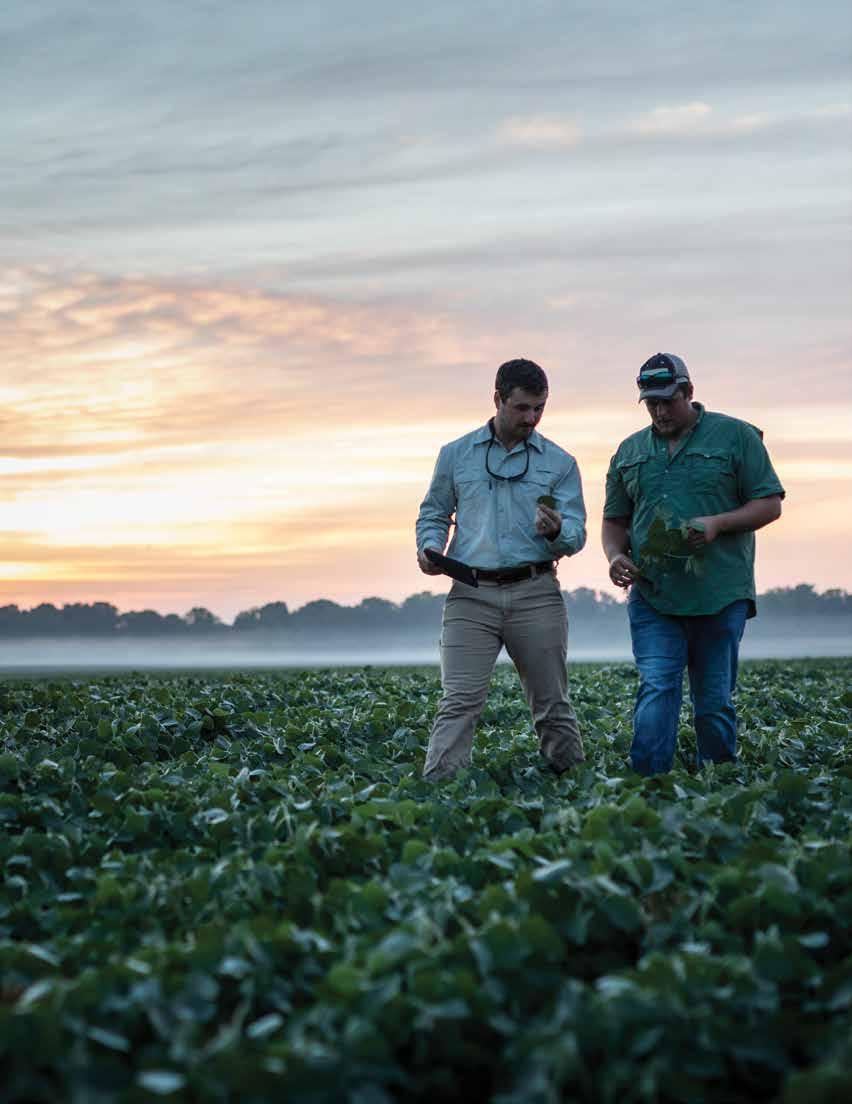
Whether you’re dealing with drought, flood, heat or other climate-related stress, the soy checkoff is working behind the scenes to diversify U.S. soybean genetics and increase stress tolerance. We’re looking inside the bean, beyond the bushel and around the world to keep preference for U.S. soy strong. And it’s helping make a valuable impact for soybean farmers like you.
See more ways the soy checkoff is maximizing profit opportunities for soybean farmers at unitedsoybean.org
The Ohio Soybean Council Foundation (OSCF) is pleased to announce the scholarship recipients for the 2022–2023 academic year.
In its 15th year of programming, the OSCF is awarding 13 scholarships to undergraduate and graduate students in Ohio. The OSCF Scholarship Program was created to encourage undergraduate students to pursue degrees in one of the many academic fields that support the future of the soybean industry, as well as to support ongoing graduate-level research. Since 2008, the OSCF scholarship program has awarded over $400,000 in scholarship funds to students studying agriculture or a related field at Ohio colleges or universities.
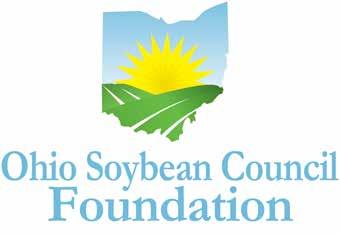
scholarship committee and I was beyond impressed with the students we met. The dedication these students have for agriculture and more specifically the soybean industry is remarkable.”
Undergraduate scholarships of $3,000 each were awarded to Rachel Barrett, Alec Bollinger, Kearsten Kirby, Lauren Mellott, Lindsey Okuley, Ryan Patton and Paige Teeters. The annual $5,000 Bhima Vijayendran Scholarship, named in honor of a Battelle research scientist who has made tremendous contributions to the soybean industry, was awarded to Laura Wilker. The Robinson W. Joslin Scholarship was awarded to Bethany Starlin. This annual $3,000 scholarship was created to honor a long-time leader in the soybean industry both in Ohio and nationally, who passed away in May 2016.
Graduate scholarships of $4,000 were awarded to Christian Vargas Garcia, Seth Kannberg, Melanie Medina and Stephen Riley.
“Congratulations to all of the 2022–2023 scholarship winners,” said Bob Suver, Clark County soybean farmer and OSCF scholarship committee member. “This was my first year on the
Rachel Barrett of Rockford, Ohio, is a sophomore at The Ohio State University studying food science and technology.
Alec Bollinger of Sycamore, Ohio, is a junior at Marietta College studying environmental and petroleum engineering.
Kearsten Kirby of Piqua, Ohio, is a junior at Wilmington College studying agricultural communication.
Lauren Mellott of Butler, Ohio, is a sophomore at The Ohio State University studying agriscience education.
Lindsey Okuley of Wapakoneta, Ohio, is a junior at The Ohio State University studying agricultural communication.
Ryan Patton of Logan, Ohio, is a junior at The Ohio State University studying agriscience education.
Bethany Starlin of Logan, Ohio, is a junior at The Ohio State University studying agricultural communication.
Paige Teeters of Hillsboro, Ohio, is a sophomore at Wilmington College studying agricultural education.
Laura Wilker of St. Marys, Ohio, is a junior at University of Dayton studying chemical engineering.
Christian Vargas Garcia is pursuing his doctorate in horticulture and crop sciences at The Ohio State University. His research area focuses on plant breeding to identify Phytophthora Root Rot resistant genes in soybean plants.
Seth Kannberg is pursuing a master’s in crop science at The Ohio State University. His research analyzes the effect of planting dates on seedling survivability and soybean yields.
Melanie Medina is pursuing her doctorate in plant pathology at The Ohio State University. Her research looks at the association between communities of fungi in soils and their potential to suppress the effects of soybean cyst nematode in soybean fields.
Stephen Riley is pursuing his doctorate in polymer engineering at the University of Akron. His research concerns the mechanical and electrical effects of charred soybean hulls and their use as an alternative for carbon black in industrial products. u
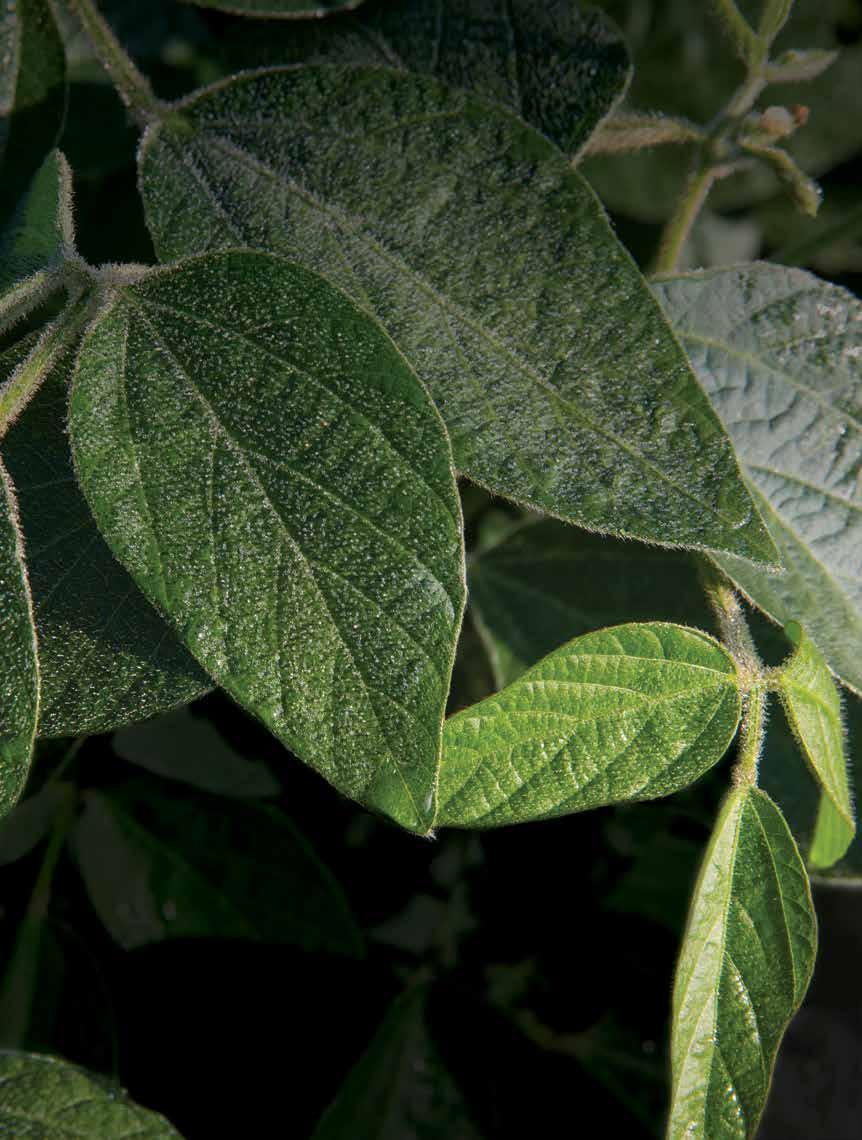

The Ohio Soybean Council partnered with Aimpoint Research to conduct a producer survey in the beginning of 2022 to improve communications and strategic investment. The results of the survey are being used to evaluate the perceived value of checko -funded programs, understand grower attitudes towards the soybean checko , test awareness of programs and identify perceived challenges and opportunities.
It is recognized that the soybean checkoff develops markets, markets soybeans and develops new uses and/or products.
Other impactful checkoff investments recognized include price support, education and information and giving farmers a voice.
About 7% of farmers are currently enrolled in a carbon market program. Nearly 50% of farmers surveyed said that they were somewhat or very likely to enroll in a carbon program. 7%
23% of farmers grow premium soybeans. Types of premium soybeans grown are non-GMO (6%), high oleic (6%), food-grade (5%), seed beans (4%) and organic (2%).
Funded
The biggest challenge is input and production costs followed by weed control and resistance.
Other on-farm challenges include prices, markets, disease, trade and exports, insects and international competition.
About 30% of farmers are currently using biodiesel on their operation. A majority of the farmers who are not currently using biodiesel struggle to access it.
Non-online sources continue to be the most popular among growers for agricultural information with magazines and other physical publications at the top (90%).
It’s not every day that a report comes out to help you make decisions now so you are set up for success tomorrow. However, a recent report from five state soybean checkoffs has done just that. Aptly named the “Future State of Soy,” checkoff groups from Iowa, Missouri, Illinois, Indiana and Ohio are sharing five major trends for soybeans anticipated in the next several decades. The soybean supply chain is rapidly changing, with consumer trends, expanding export markets and an increased focus on sustainability influencing how soybeans are grown. Understanding these trends now can help you make smart, informed decisions about changes to make on your farm so you are best positioned for future success.
In the Future State of Soy report, these five trends were cited as major contributors to how soy will be used or perceived in the future. So, what does this mean for farmers? Below are some key considerations for your farm.
THERE WILL BE A RISING FOCUS ON QUALITY
SOYBEAN OIL AND MEAL
Consider different varieties to grow that maximize oil or meal quality without sacrificing yield. Many of these varieties come with increased traceability for consumers who want to know more about their food.
THERE WILL BE CHANGES IN FUEL DEMAND AND EMERGING FUEL USES
Soy-based biodiesel is a high-quality, high-performing alternative fuel that can be put to use on your farm and in your community. Become a vocal proponent of soy biodiesel, and practice what you preach.
THERE IS EXPANDING GLOBAL MARKET COMPETITION, AND INFRASTRUCTURE WILL BE A KEY COMPONENT IN SERVING GLOBAL NEEDS
Expanded global competition will make it crucial that U.S. Soy stands out, both in quality and in how it is grown. Consider adding sustainable growing practices to your farm to help differentiate U.S. Soy from others.
THERE IS A RISING NEED FOR PROTEIN, IN BOTH ANIMAL AND PLANT FORM
Varieties specifically designated for animal feed or human use can be added to your fields. Both markets will be crucial with an expanding population, and soy’s versatility make it a valuable solution for needed protein.
THERE WILL BE EMERGING AND DIVERSIFIED REVENUE STREAMS AVAILABLE TO FARMERS
New revenue streams will depend on data. Invest now in data capture tools and analysis and work with extension specialists to help you set up a valuable data management program.
Every farm and every farmer is unique. The Future State of Soy report was designed to help farmers best position themselves for future success. Not all considerations or opportunities will be viable for all farms and farmers — but knowing where the industry is moving can help you make informed decisions for your future.
As you look to future-proof your farm using the below trends and considerations, know that the soybean checkoff is also looking at opportunities to support farmers’ futures. The soybean checkoff will focus on four key strategies to maximize the opportunities presented by the five trends:
• Disrupt the agri-food value chain of the future by taking risks, embracing change and pushing back on the status quo.
• Explore new business models that make checkoff dollars go further, faster, to ultimately result in unexpected, but impactful, partnerships.
• Re-imagine research and development to speed up the innovation cycle in agriculture and incorporate partners outside our traditional circle.
• Define the value proposition of U.S. Soy to domestic and international customers so that our commodity is positioned as the high-quality, sustainable and available Soy in the global marketplace.
Although there really is no crystal ball for soybean farmers, understanding the Future State of Soy can help you grow and adapt your farm to take advantage of the future changes that will impact our entire industry. Being prepared now can eliminate the need to make rash, complicated and potentially expensive changes to your farm in the next few decades.
To learn more, contact your state checkoff board or visit FutureStateOfSoy.org.
To better understand the farmers they serve, the Ohio Soybean Council (OSC) has collaborated with Aimpoint Research® for many years on an annual farmer survey. The survey helps the organization learn directly from farmers about their priorities for the checkoff and assists OSC in making long-term strategic decisions. Aimpoint Research’s intelligence work goes beyond market research, however, to examine ag and consumer trends for a holistic understanding of what is coming down the pipeline for U.S. agriculture. In early 2021, OSC and four other state soybean checkoffs decided to capitalize on that expertise to discover what the soybean industry will look like in 20 years. The result of this partnership became the Future State of Soy.
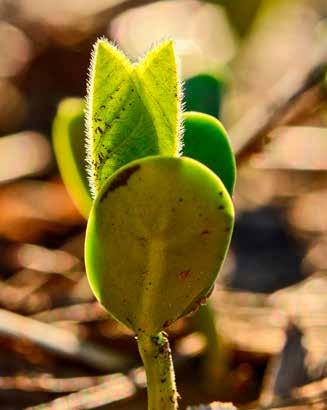
Driven by the core belief that the success of agri-food is essential to national security, Aimpoint Research® blends military intelligence techniques and business market research capabilities to help clients understand what's really happening in the marketplace, what's going to happen in the future and what to do to ensure success. Founded and led by CEO Brett Sciotto, a graduate of the U.S. Military Academy at West Point and former Army Intelligence officer, Aimpoint Research provides a competitive advantage to organizations across the agri-food value chain through a variety of services:
Modeled after military intelligence watch desks, the Agri-Food WatchDesk is made up of a team of experienced analysts who utilize hundreds of collection assets and continually monitor the trends, disruptions, and innovations that could represent threats and opportunities for clients. From the intelligence gathered, the team publishes monthly written reports, live webinar briefings, the annual AgriFood Intel Assessment, and more.
Wargaming is a powerful tool that has been utilized extensively by the military for decades, and now
agri-food organizations are using it to explore the future of their businesses and agriculture. Aimpoint Research wargames are dynamic, highly interactive events. Players roleplay perspectives in future scenarios, compete and collaborate in teams, and debate new ideas in real-time. The competitive nature of the game breaks echo chambers and challenges conventional wisdom, even among industry experts.
From the farm gate to the dinner plate, our food system is experiencing an unprecedented rate of change and shifting consumer preferences are driving this evolution. To succeed, the farmers of the future will defy conventional wisdom and adopt new business strategies, technological innovations, and management philosophies.
Aimpoint Research’s Farmer of the Future and Next Gen Consumer thought leadership platforms are the result of comprehensive, predictive research that explores consumer trends driving change and answers the question: Who are the farmers of the future and what will they require of us? These platforms give agri-food organizations a peek into the future so they can make better strategic decisions. Recently, the firm launched its newest platform, Food Power, to explore the significant role agriculture plays in U.S. national security.
To learn more about these and other Aimpoint Research services, visit www.AimpointResearch.com. u
U.S.-grown soy is a good fit for anticipated diet and nutrition changes as more global consumers begin making dietary choices intended to boost their immune systems and general health while considering the wellness of the planet. According to Packaged Facts, health concerns are among the largest factors that drive consumers to consider eating more plant-based foods or adopting more plant-forward diets.
Soyfoods connect to consumer attitudes.
Global food and ingredient company Archer Daniels Midland (ADM) shared research suggesting that consumer priorities are evolving in the face of worldwide pandemic concerns.
ADM’s OutsideVoice consumer insights platform reported that an estimated 77 percent of consumers want to do more to stay healthy in the future.
associated high protein diets with muscle health and tone; 50 percent with daily health; and 40 percent with weight management. Soyfoods are a unique vegetable protein source compared to other legumes, as characterized by a combination of their high protein content and lower carbohydrate content.
Global trends highlight the advantages of soyfoods.

ADM research has identified the following global trends.

Increasingly, the quest for maintaining health incorporates fitness. Nearly half of global consumers now consider physical strength an integral part of being healthy. With those priorities in mind, it is not surprising that high protein diets, including protein from soyfoods, are gathering momentum. In a survey by HealthFocus International, 55 percent of global consumers associated a high-protein diet with physical energy; 51 percent
A more proactive approach to nourishing the body and mind: ADM research found that 31 percent of consumers are purchasing more items tailored for their health; 50 percent prefer foods and beverages that naturally contain beneficial ingredients. Soyfoods fit into this category. More than 2,000 soy-related peer-reviewed articles are published each year, with much of the research being conducted because of evidence that soy, independent of its nutrient content, may have a variety of health benefits.
Sustainability takes center stage: Approximately 65 percent of consumers say they want to have a positive impact on the environment through their everyday actions. This goal is a key reason why 32 percent of consumers buy sustainably produced items. U.S. soybean farmers meet national sustainability and conservation standards to ensure sustainable soybean production.
The gut microbiome emerges as the gateway to wellness: Approximately 25 percent of global consumers have digestive health issues. Microorganisms living in the intestinal tract (gut microbiome) have an important role in digestion and nutrition. Probiotic foods — including fermented soyfoods like tempeh and miso — naturally contain beneficial live microbiota that may promote digestive health.
Plant-based food boom expands beyond the bun: Globally, 56 percent of consumers are trying to include more plant-based foods and beverages in their diets, propelling alternative proteins into an increasingly mainstream phenomenon. The versatility of soyfoods ranges from edamame and minimally processed choices such as tofu and soymilk to convenience products like frozen meals and dessert products.
Transparency builds consumer trust: Consumers now expect their food labels to provide greater transparency around a product’s entire life cycle, with 26 percent of global consumers looking for the country of origin on their food and drink labels. In the U.S., soybeans are grown on more than 300,000 farms in 45 states, with 97 percent of U.S. farms being family-owned. u
Since the invention of computers, we’ve seen that they can be used to perform complex tasks. Some would say having an intelligence of their own — artificial intelligence (AI). Dr. Scott Shearer from the Department of Food, Agricultural and Biological Engineering at The Ohio State University says that “artificial intelligence attempts to emulate the human brain and the way we learn.”
Just as human intelligence is developed through learning, reasoning and problem solving, AI is developed in a similar way. This is the basis of Shearer’s research as he applies AI to agriculture through drone technology and weed identification.
Shearer uses a system on a chip (SOC) technology known as a Raspberry Pi, which is a credit-card sized fully operational, personal computer. Since the beginning of Shearer’s research, his students have upgraded to a similar SOC that is specifically designed for AI applications. Shearer and his team paired a Jetson Nano graphical processing unit (GPU) with camera and the SOC technology with a small Unmanned Aerial System (sUAS) to collect images in soybean fields from above the crop canopy.
To apply this technology to the agricultural field, Dr. Shearer teamed up with Ohio State weed scientist Dr. Mark Loux to address the glyphosate resistant weed problem by identifying weed escapes. Using the sUAS and SOC-camera pairing, the team is developing an “image training database” for weed escapes in soybeans.

The goal is to train convolutional neural networks (CNNs) to categorize images of common soybean stressors. Existing, pretrained CNN classifiers are retrained using the soybean image library for deployment on the Jetson Nano GPU and camera combination. The CNNs are trained to recognize crop stressors so this technology can be flown on sUAS for capturing and analyzing images to map weed escapes. CNN classification accuracies are continually evaluated to help build confidence with farmers and crop consultants as AI is deployed in new product offerings for agriculture.
“Using this technology will reduce the amount of herbicide applied to fields, which is not only better for a farmer’s bottom line, but it will also decrease the chemical footprint on surrounding environments,” said Jerry Bambauer, Auglaize County soybean farmer and Ohio Soybean Council research committee chair.
By using AI and sUAS technology, Dr. Shearer and his team at Ohio State hope to provide protocols and technologies to identify, map and eradicate weed escapes by first
surveying a field with a scouting sUAS and then dispatching a second sUAS to eradicate weed escapes. This would replace the traditional spray application methods for small areas of early weed escapes, hopefully extending the life of glyphosate resistant technology for weed management on Ohio farms.
“Companies like John Deere and Greeneye Technology have already adopted AI-enabled systems to detect and spray individual weeds, and I see other companies doing the same in the future,” Dr. Shearer said. “AI will also be used to turn time series data, such as seasonal weather information, into actionable information for water and nutrient management.”
Dr. Shearer and his team are growing their AI data sets every day. The Ohio Soybean Council finds value in investing in this research because it will create cost-effective solutions for Ohio farmers when managing their soybean crop.
To learn more about OSC’s investment in agronomic improvements and technological advancements, read the 2021 Research Report at SoyOhio.org/ Plant-Research. u
As concerns about climate change increase, consumers, investors, and, in some markets, regulators are demanding that corporations seek ways to reduce their carbon footprint. As a result, companies are establishing strategies for reducing greenhouse gas (GHG) emissions. Some companies focus on indirect emission reductions, called ‘offsetting’, while other companies target direct emission reductions within their supply chain, often referred to as ‘insetting’. Regardless of the method by which a company chooses to reduce emissions, the opportunity for agriculture to be part of the solution is substantial and is therefore growing.
However, the multiple carbon marketplaces and quantification schemes can be confusing. Navigating current agricultural carbon credit programs and understanding how they may change is critical for two reasons: 1) Agricultural products are the raw inputs in numerous products, creating abundant opportunities for carbon insetting; and 2) The scale of agriculture allows for large reductions of carbon through increased stocks of Soil Organic Carbon (SOC).
The direct GHG emissions of a typical row crop operation originate from agricultural residue decomposition, soil carbon emissions related to tillage and other practices, fuel combustion, and emissions from fertilizer application. Additionally, there are indirect
emissions from manufacturing those expendable inputs.
Farming involves biological processes, which includes direct interaction with the soil, a major carbon sink. Farmers can reduce or sequester more carbon in the soil through conservation management practices than what they emit when working the land. Achieving a netnegative carbon balance in row crop agriculture could have enormous positive impacts on the climate, in addition to the farmers’ bottom line.
Carbon offsets can be sold to corporations committed to reducing their carbon footprint or to companies operating in industries with regulated GHG emission targets, where the regulation allows. Many programs, such as Indigo Carbon and Nori, are emerging to capture agriculture’s potential role in climate mitigation.
Examples of agricultural supply chain partners seeking ways to reduce emissions within their own supply chains through insets are Bayer Carbon Program and Agro Carbon Alliance. The carbon inset credits may reflect reductions in GHG emissions and/or increased SOC changes. Most of the
current ag carbon inset programs do not include the indirect emissions related to the manufacturing of farming inputs, or the direct fuel combustion emissions.
There could be substantial demand for agricultural carbon credits by the biofuels industry because of the industry's regulatory environment, and due to biofuels producers voluntarily setting goals for reducing emissions across their supply chain.
The regulators use a carbon intensity (CI) score to measure a fuel’s lifecycle greenhouse gas emissions per unit of transportation energy delivered. Since emissions from soy-based biodiesel’s feedstock comprise 43 percent of the total CI, this presents a tremendous opportunity for reducing soy-based biodiesel CI by targeting lower CI soy feedstocks.
Almost 64 percent of the soybean feedstock CI comes from field-level emissions and about 31 percent of the emissions are from farm energy use and farm input manufacturing. In addition, SOC sequestration is typically not included in feedstock CI calculations. SOC sequestration can contribute significantly to lowering feedstock CI scores, and to producing net-zero or even negative CI feedstocks.
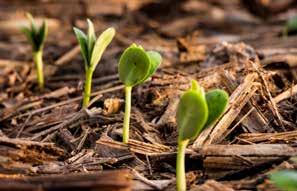
Considering the entire farmlevel carbon footprint when calculating feedstock CI would send strong market signals to feedstock producers that their actions for mitigating climate change are paramount. This would also provide a means for more accurate and higher valuation of agricultural carbon credits. u
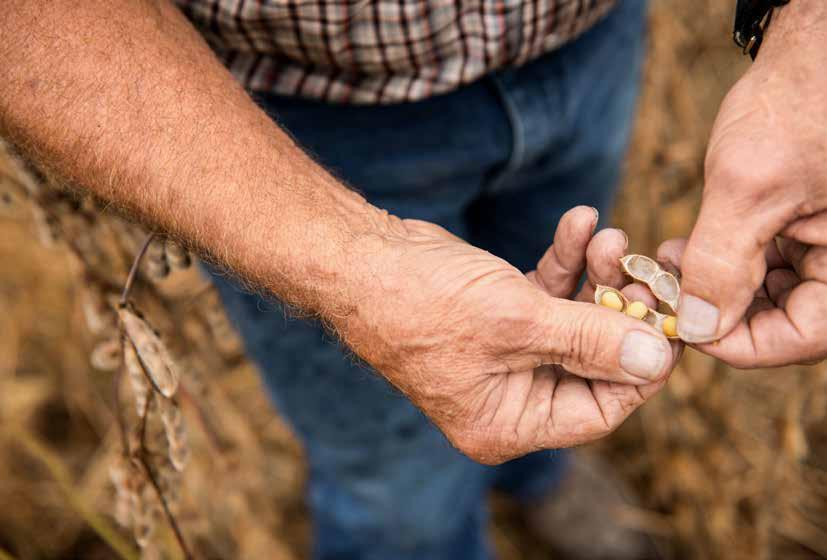
“Build-Test-Learn” That is the cycle being used to identify specific genetic traits that can improve the amount of high value soybean oils and meal produced on a per acre basis. The soybean supply chain is changing rapidly, with consumer trends, growing export markets and sustainability efforts influencing acreage and how soybeans are grown. The Ohio soybean checkoff, in conjunction with four other states is looking at ways to help soybean farmers remain relevant. The Future State of Soy report was created to help outline the biggest potential shifts for U.S. Soy so farmers can best position themselves for success, and make smart, informed decisions today to ensure their future is full of opportunities tomorrow.
The first area that has been identified as a key priority is “Rising Focus on Quality.” Research is being conducted, using soybean checkoff dollars, toward the development of high yielding cultivars and germplasm with optimum oil and protein content, and innovative oil attributes for the current market. “This research has two main components,” said Dr. Leah McHale, Associate Professor of Horticulture and Crop Science at The Ohio State University. “The first component is the development of optimum oil and protein content. We are defining optimal in terms of estimated processing value. It is aimed at yielding as much oil and protein with the right components as possible on a per acre basis.”
“A breeding program that focuses simply on soybean yield is similar in terms of the selection process that is
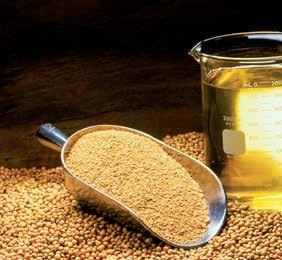
used when breeding for quality plus yield to calculate estimated processing value that can be extracted on a per acre basis,” said McHale. “Yield is driving what is produced on a per acre basis. The selections made whether it
is strictly for yield or for quality plus yield are very similar. The results would be very different if a breeding program was focused strictly on the quality components and did not include yield per acre.”
The research is looking for inefficiencies in the process the plant uses producing protein and oil. “We are using traditional breeding techniques as well as looking at where the bottlenecks are in the carbohydrate metabolism that lead to protein and oil,” said McHale. “We want to know what is limiting the plants ability to increase protein and oil. We are accomplishing this by looking at the genes that are known to function in the biochemical pathways from other plant systems. When we do this we can make informed decisions about increasing the genetic expression of one gene over another, or decreasing the genetic expression of a particular gene to achieve a specific outcome. Then we evaluate it to see if we got the results we were after. This allows us to fine-tune how oil and protein are produced in the plant, and learn how to be able to produce more of it.”

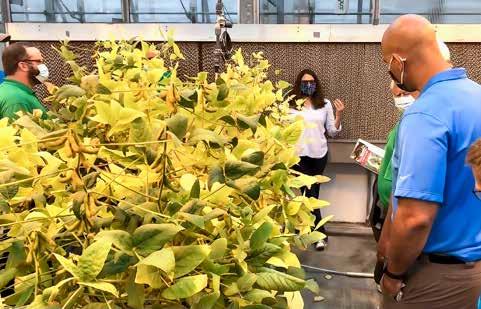
what oils are being produced, so we understand that by shutting down or over expressing certain genes what will happen. We cannot necessarily predict to the same level what will happen to the total oil or protein accumulation by changing how certain genes work.”
Dr. Leah McHale talked about checkofffunded research in soybean breeding with members of the Ohio Soybean Council Board of Trustees last August at The Ohio State University’s College of Food, Agricultural and Environmental Sciences Wooster Campus.
“Collaborative work is being done by researchers to learn how the carbon that is going into a plant is being partitioned to protein and oil and other things during the metabolic flux of the seed development,” said McHale. “Research is also being done by taking the genes that we think are functioning in a certain way and generating transgenic plants to test if they are actually doing those things. Once we have figured out if the specific genes function in a given way, we can understand how it works, and if it doesn’t work, then we can ask why not.”
“This whole process is a cycle of Build–Test–Learn, and then build better”, McHale commented. “We have a very good understanding of the biochemical pathways that lead to
The second component of the research is “innovative oil attributes”. Examples of this include the “aquafeed” products that are being researched. These products have novel fatty acid profiles which have the potential to add value to the commercial fish feed markets or the baking and food industries. “We are trying to combine those with research into the really high value oils to get a higher estimated processing value,” said McHale. “Then we want to find it in a genetic background that also has a high oil yield. We are also trying to develop soybean cultivars that have a really high oil content. Once these are identified and developed, the goal would be to combine them using genetics to get the high value oil that is also high yielding in the same plant. Soybeans are being developed that would have high levels of butylated hydroxyanisole (BTA) and butylated hydroxytoluene (BHA), that are novel to Omega-3 and Omega-6 soybean oils.”
Soybean meal is an important protein source for much of the livestock industry and is a product of the crushing process. “Research is being conducted to learn more about soybean meal yield per acre and how it can be optimized to get the most yield per acre from the beans planted,” said McHale.
“We are not looking at any special meal characteristics at this point in this project.” The meal characteristics are being undertaken by another research team.
The timeline for the estimated processing value research is ongoing. “Just like a farmer, we are always trying to find ways to increase yield. We are just looking at yield from the estimated processing value per acre. It can always be increased,” said McHale. “For the high value oil research, the auto components have been developed for the aqua feed system, but they still need to be tested at various levels and combined together. We have tested some genes that we hypothesized would function in altering the total amount of oil in the soybean seed. The result was that they did not function completely as we thought they would because they actually changed the composition of the soybean oil, in terms of the fatty acids. Since then, we have done the metabolic flux analysis to look at how the carbon is being partitioned in the seed so we can better understand what is going on and move forward. It is the Build-Test-Learn, and then build better cycle. We have gone through one phase of the Build-Test-Learn, and now we are on to building better, testing and learning more.” u
As food and agribusinesses come under fire from consumers and investors to improve sustainability, access to capital is essential to fund initiatives that reduce greenhouse gas emissions, enhance soil health, boost biodiversity, improve water quality and increase traceability.
Enter “green equities” or sustainability-linked loans (SSLs).
Barely four years old, the SSL market has grown to $330 billion in 2021 from about $50 billion in 2018, according to July-published research by Bank of America.
Commonly known as green debt, green equities and green bonds, SSLs require companies to pay investors higher interest rates if they fail to hit agreed-upon sustainability targets. SSL deals appeal to companies because they offer flexibility over use of loan proceeds. An article by the Financial Times suggests this is a key reason that SSLs account for about $700 billion of the overall $1.3 trillion market for loans tied to environmental, social and governance (ESG) factors.
Additionally, green debt provides investors and financiers opportunities to guide the agricultural sector in sustainable directions through incentives, such as lower interest rates. In return, participating companies typically, must show improvement within a pre-defined sustainability metric, with progress tracked and monitored by independent, third parties.
One of the agricultural sector’s largest SSLs was
a $2.1 billion deal by China’s Cofco International in 2019. It was the largest evergreen credit facility for a commodity trader, topping a $745 million sustainability loan for Gunvor Group, the Swiss-based commodity trader, in 2018. Sustainalytics, a ratings provider, says Cofco hit its sustainability targets last year, including year-on-year improvements in the traceability of commodities, such as soy.
According to the Financial Times , Sustainalytics also verified a sustainability bond framework for Kellogg, which the company will use to issue green debt to finance projects to reduce its carbon footprint and help promote sustainable supply chains.
Europe leads the way in SSLs with lenders issuing about $150 billion in sustainability-linked debt in 2020. And it’s catching on around the world. In addition to deals in China and the U.S., Singaporean bank DBS signed a $27 million SSL with Chew’s Agriculture, one of the largest egg producers in Singapore. Chew’s will pay lower interest rates if it meets Humane Farm Animal Care (HFAC) standards.
Similarly, Tereos Sugar & Energy Brazil, announced a $105 million SSL. It will cut carbon emissions and water use in sugarcane production, as well as to increase its ESG scores in exchange for an interest rate margin reduction each year it meets sustainability targets. u



For generations, farmers have prioritized sustainability. U.S. soybean farmers understand the importance of sustainable farming to protect valuable environmental resources. By doing so, they preserve and protect their farming operation for the next generation. The vast majority of U.S. soybean farmers follow the conservation regulations and farming practices outlined in the U.S. Soybean Sustainability Assurance Protocol, or SSAP.
Things to Know about the SSAP:
1. Buyers of U.S. Soy and soy products can be assured that more than 300,000 U.S. soybean farmers — the vast majority in America — have followed guidelines for responsible farming. This means they are purchasing a sustainably grown product.
2. The guidelines included in the SSAP set required steps for U.S. soybean farmers to continuously improve their sustainability performance. In other words, U.S. soybean farmers aren’t resting on their laurels — they’re constantly improving to ensure an even more sustainable product in the future.
3. In addition, the SSAP includes farm audits conducted by an independent third party — the U.S. Department of Agriculture. But the SSAP isn’t just supported by the U.S. government; it’s also positively benchmarked against the soy sourcing guidelines of the European Feed Association, (FEFAC), and by the independent International Trade Centre (ITC).
4. The SSAP has a quantifiable and
results-driven approach to continuous improvement, which is constantly reviewed and updated according to metrics and feedback.
“Following the management practices laid out by SSAP gives Ohio and U.S. soybean farmers a competitive advantage in global markets as consumer preferences are shifting to sustainably-produced goods,” said Mike Ralph, Marion County soybean farmer and the Ohio Soybean Council demand committee chair. What’s new when it comes to sustainability? The value of on-farm sustainable practices for companies and end-users. Sustainability has evolved and today is a strategic management approach that enables companies to thrive in competitive markets, and U.S. Soy works to support these efforts in the Americas, and across the globe.
According to an FAO Report entitled Regional Overview of Food Security and Nutrition 2021, the number of people living with some hunger increased and is at its highest point since 2000 after a 30 percent increase just from 2019 to 2020. Sustainable and efficient value chains and diversification of the food
system are critical for healthy diets. Companies, farmer organizations, NGOs, and governments must all act together to deliver.
“Our relationship with local communities, regulatory bodies and other collaborators positively changed with the implementation of sustainability practices,” said Oscar Botero, President of Piscicola Botero, one of the largest aquaculture and tilapia producers in Colombia.
Botero was one of many speakers who shared the stage at the U.S. Soy Americas Agribusiness Sustainability Conference in February, where he explained the company’s sustainability journey as a longterm investment.
“The transition started when I joined my family’s company, and it took at least five years to raise awareness about sustainability,” he said. “It’s ongoing, continuously improving operations, outputs and relationships with the environment and stakeholders.”
Ohio growers practice sustainability to remain competitive in global markets and several Ohio companies participate in the U.S. Soy Sustainability Assurance Protocol.
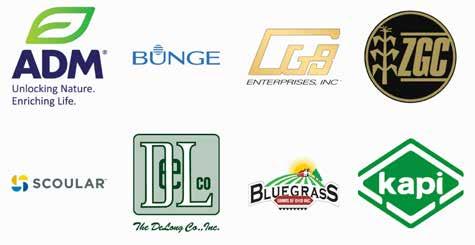
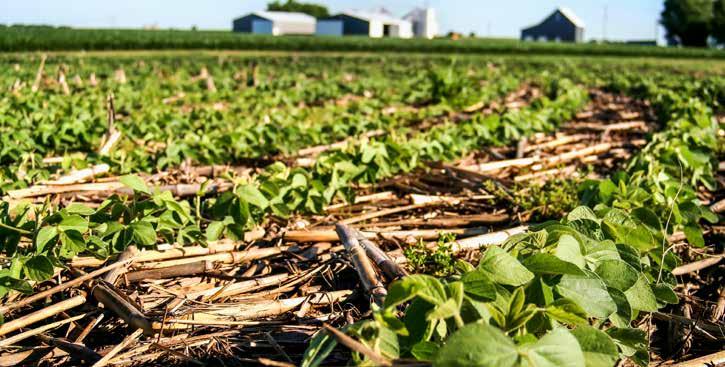
How can agribusinesses prioritize sustainability, commercialize sustainable products and navigate political implications of sustainability strategies? That’s where the power of partnership comes in.
“More than a decade ago, the U.S. Soy industry began to take steps to measure our farming practices, so that we could identify areas of progress and use data and our own farmers’ pride of ownership in their family operations to help the international customers of U.S. Soy meet their sustainability goals,” said Jim Sutter, CEO of the U.S. Soybean Export Council (USSEC).
According to the Field to Market National Indicators Report 2021, since 1980, U.S. Soy farmers have reduced GHG emissions by 42 percent, improved water use efficiency by 61 percent, reduced soil erosion by 35 percent, and increased soy production by 130 percent. Farmers’ value of sustainable practices and their focus on the environment enable customers of U.S. Soy.
“Thanks to U.S. Soy, we are improving our product offer and marketing campaigns of export products that will land on U.S. retailers’ shelves by mid-2022,” said Leonel González, Procurement Manager, RAGASA, one of Mexico’s leading companies focused
on oilseeds and plant-based products. “Our success comes from integrating sustainability in the vision, mission and values of our company.”
Byron Urrutia, General Manager, COMAYMA, one of Guatemala’s leading animal feed companies, added that sustainable practices are increasing in demand, and will soon be a basic competitive advantage in the marketplace.
“Sustainability is one of the most important opportunities that USSEC has imprinted in our company,” Urrutia said. “Since our engagement with USSEC, we’ve transitioned our strategy toward sustainability and better met the cooperative values that founded our company.”
Conducted biannually, the U.S. Soy Americas Agribusiness Sustainability Conference, which is partially funded by U.S. Soy farmers, their checkoff and the soy value chain, is the premier event for companies concerned with their future in the marketplace and looking to make strides in sustainable positioning. Sixty industry leaders gathered to explore how sustainability can give them an edge in an increasingly competitive business environment and the solutions U.S. Soy delivers.
As part of the SSAP production practices, producers use crop rotation to improve soil health and biodiversity.
“USSEC is helping set a reference for how things are done in the sustainability age, and we are providing multiple tools to elevate our stakeholder businesses,” said Carlos Salinas, USSEC Regional Director for the Americas. “With USSEC’s collaboration, customers are developing markets and meeting local demand using sustainable U.S. Soy. We look forward to deepening the partnerships.”
Attendees at the U.S. Soy Americas Agribusiness Sustainability Conference included top executives in management, marketing, planning, procurement, strategy, sales and sustainability areas from importers, crushers and end-users of U.S. Soy products from the Americas region.
“We are committed to building a sustainability network that services livestock, feed manufacturers and crush industries in the Americas in response to global needs,” said Luis Bustamante, U.S. Soy Marketing Specialist for the Americas with USSEC. u
“ My soybean checkoff investment means that farmers are willing to invest in our future. It makes me feel like somebody’s out there putting their best foot forward for me. I can’t be two places at once. I can’t run a farm, raise a crop, reach out globally and prove to people that I grow a great product.”
-WADE MCAFEE, DELAWARE, OH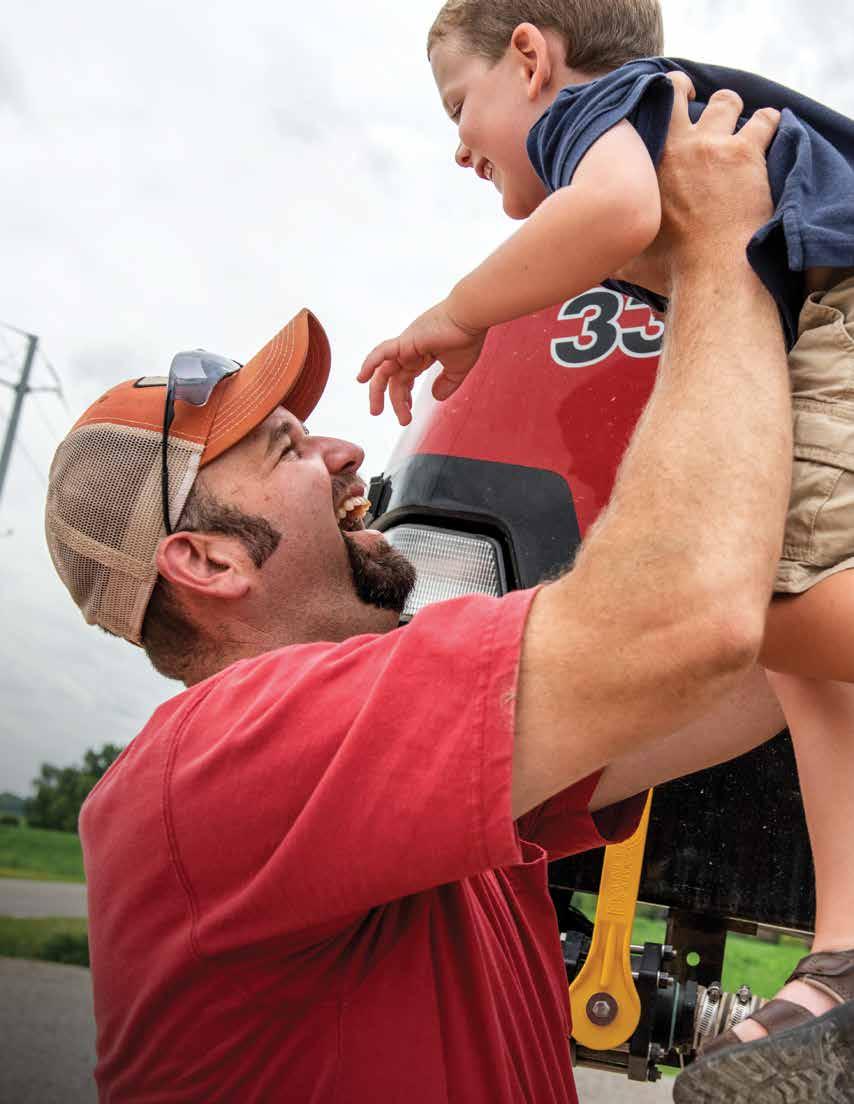
We know you can’t be everywhere at once. By investing in the soybean checkoff, farmers can concentrate on running their operations while the Ohio Soybean Council works to increase global demand, improve yields and create new opportunities for future generations.
Learn more at SoyOhio.org/HereWeGrow.